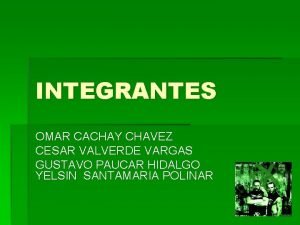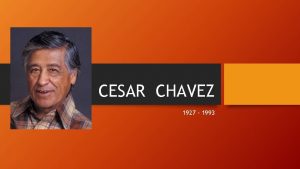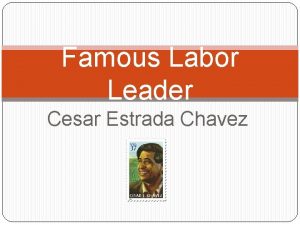Cesar Chavez Journal 1 Identify a time when





- Slides: 5

Cesar Chavez

Journal • 1. Identify a time when you went out of your way to help somebody else—a friend, a family member, a neighbor, or a complete stranger. What were the consequences of your actions for you and for others? • 2. Identify a situation when you knew something was wrong or unfai. G but you did not intervene to improve the situation. What were the consequences of your actions for you and for others? • 3. Compare these two situations. What led you to act in one situation but not to intervene in the other?

• Create a working definition for “upstander” with group • Write this definition in your journal.

Online – klossnerscience. wordpress. com • Reading excerpt (in this case: upstanders in the Holocaust) to expand the working definition and develop an “Identity Chart” for an upstander.

Journal • A. Use text and/or video to profile an activist/upstander. • Note: It is ideal to have a person who is a ‘regular” person who takes it upon him or herself to take a stand make change. This gives students the idea that taking action is not reserved for a select few. B. Generate an “Identity Chart” for the individual. (individually or paired) C. Debrief: a. What problem or injustice did this person witness? b. What range of choices did this face? c. What action did this person take? d. What obstacles did this person face in achieving his or her goal? How did she or • e. What qualities or characteristic of this person lead him or her to take action? • f. How does this person exemplify the traits of an upstander? • • •









